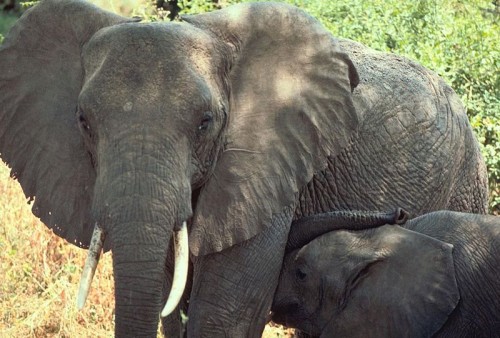
UN Secretary Secretary-General Ban Ki-moon warns that wildlife trafficking, particularly the illicit ivory trade, “constitutes a grave menace to sustainable peace and security” in Central Africa.
In his report to the UN Security Council, the Secretary-General writes that ivory obtained from the massacre of elephants may be “an important source of funding for armed groups, including LRA” (Lord’s Resistance Army). In addition, “more and more sophisticated and powerful weapons” — possibly “originating from the fallout in Libya” — are being used to slaughter elephants. The situation is dire in Cameroon, the Central African Republic, Chad, and Gabon.
The Secretary-General’s report noted that “between 2004 and 2013, more than 11,000 elephants were slaughtered in the in the Minkebe Park area alone, in north-eastern Gabon” and that “86 elephants, including 33 pregnant females, were slaughtered within a week in Chad” in March 2013. During November and December 2012, over 300 elephants were massacred in Cameroon’s Bouba Ndjida National Park.
I urge Governments of the subregion to consider the issue of poaching as a major national and subregional security concern requiring their concerted and coordinated action.
John Scanlon, Secretary-General of CITES commented on the report, noting that “high-level political engagement and real-time support for front-line enforcement officials by police and the military” is required to combat the scourge of illegal wildlife trade.
Prince Charles and Prince William have also called upon world leaders to place the battle against wildlife trafficking at the top of the global agenda.
It is worth noting that the Environmental Investigation Agency (EIA) recently reported that its undercover investigators were “told by several Chinese ivory traders that about 90 percent” of the ivory in China’s legal ivory market is from actually illegal sources.




